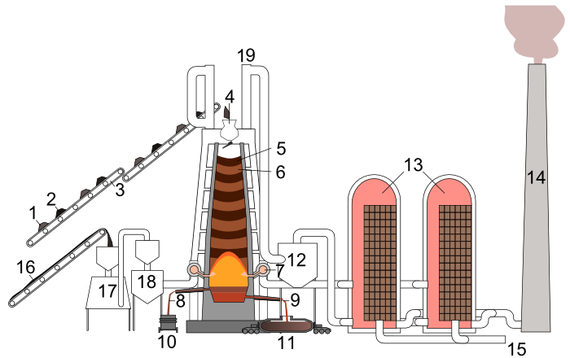 With the Port Talbot steelworks layoffs in the news, I was interested to see this tweet from Carbon Brief's Simon Evans this morning.
With the Port Talbot steelworks layoffs in the news, I was interested to see this tweet from Carbon Brief's Simon Evans this morning.
Reminder | Factcheck: The #steel crisis and UK electricity prices | @DrSimEvans https://t.co/vz4PP2ce3I pic.twitter.com/QrHcC7DXWW
— Carbon Brief (@CarbonBrief) January 18, 2016
The linked article, which seeks to divert blame away from energy costs, has this rather remarkable claim:
The share of electricity in steel production costs is around 6%, according to one estimate for blast-furnace steel production, used at most major steelworks. The Committee on Climate Change (CCC) says energy makes up 5.2% of costs for “basic metals”, which includes steel.
Now having worked in manufacturing industry in the dim and distant past I have a bit of feel for costs, and so the figure of 6% immediate jumped out at me as being very low. A moment's further thought brought to mind a geography lesson at about age 10, when we learned that steel was made from coke and iron ore rather than electricity.
Yet the whole of the Carbon Brief article discusses electricity costs alone.
This page has a representative set of cost figures for a steel mill, suggesting that coal (from which plants like Port Talbot manufacture coke on site) is as much as 25% of total costs. It also confirms electricity costs as 6% of the total.
I think it's fair to say that the Carbon Debrief has been caught with its pants down.
Being an inquisitive kind of chap, I asked Simon Evans to explain. His reply was as follows:
@aDissentient @CarbonBrief @LeoHickman as you can see, EII/EEF contributed to the article, & they didn't raise an issue with the analysis.
— Simon Evans (@DrSimEvans) January 18, 2016
Right. I'll drop a line to Richard Warren, the EEF source, to see if he wants to comment.
 Bishop Hill
Bishop Hill